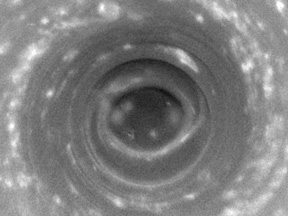Saturn has a huge, swirling storm at its South Pole. The storm is a bit like a hurricane on Earth. This gigantic storm is about 8,000 km (5,000 miles) across!
Click on image for full size
Image courtesy of NASA/JPL/Space Science Institute.
Saturn's Southern Polar Vortex
If you wanted to go someplace warm for a vacation, would you choose the South Pole? If you lived on Saturn you might! Saturn's South Pole is the warmest place on the ringed planet. Watch out for the weather, though. There is a really huge storm like a hurricane right at Saturn's South Pole.
Scientists made a "heat map" of Saturn using infrared "light". They were surprised when they looked at it. It showed that the warmest place on Saturn is at the South Pole. One scientist said that if we found this temperature pattern on Earth it would be "like discovering that Antarctica is hotter than the Sahara Desert".
There is a really, really big storm at Saturn's South Pole, too. I looks sort of like a hurricane on Earth. The storm has spiral bands of clouds, high wind speeds, and a gigantic eyewall. Hurricanes on Earth move around, but the one on Saturn stays in one spot right over the pole.
Saturn's "hurricane" is really, really big. It is much larger than hurricanes on Earth. Clouds in the eyewall tower 30 to 75 kilometers (19 to 47 miles) above their surroundings. That is 2 to 5 times higher than in hurricanes on Earth! Winds around Saturn's pole can blow as fast as 550 km/hour (342 miles per hour).
The "polar hurricane" on Saturn is the first storm with an eyewall discovered beyond Earth. Even Jupiter's Great Red Spot, which is much larger than Saturn's storm, does not have an eye or an eyewall.
You might also be interested in:
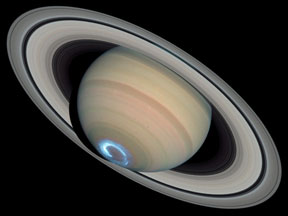
There's a lot of strange stuff going on at both the North and South Poles of Saturn. Two of Saturn's moons also have interesting polar regions. Let's take a look! The atmosphere and clouds are quite odd
...more
Antarctica is the coldest, windiest, and driest continent on Earth. It is about one and a half times the size of the United States. Almost all of Antarctica is covered with a thick layer of ice called
...more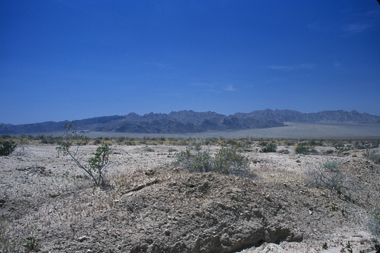
Deserts are very hot and dry places. Deserts get very little rain each year. So how do plants and animals live here? This section on the desert ecosystem will explain how! Do you know what a desert looks
...more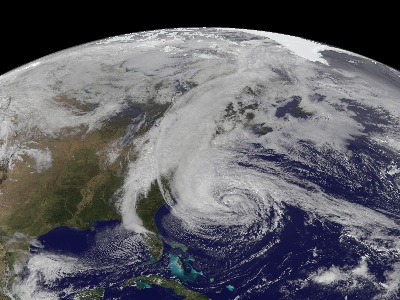
Hurricanes form in the tropics over warm ocean water. The storms die down when they move over land or out of the tropics. At the center of the rotating storm is a small area of calm weather and clear skies
...more
Wind is moving air. Warm air rises, and cool air comes in to take its place. This movement creates the winds around the globe. Winds move at different speeds and have different names based on their speed.
...more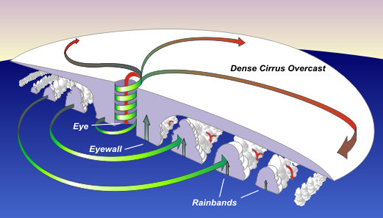
At the center of a fierce tropical storm, there is a small area where the weather is calm, the sky is clear, and the winds are just light breezes. This area is called the eye of the storm. The eye looks
...more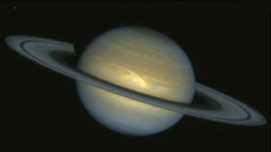
The most important motions in the atmosphere are winds. The major winds in Saturn's atmosphere are the zonal winds which are made of zones and belts. Zones and belts blow in opposite directions around
...more


